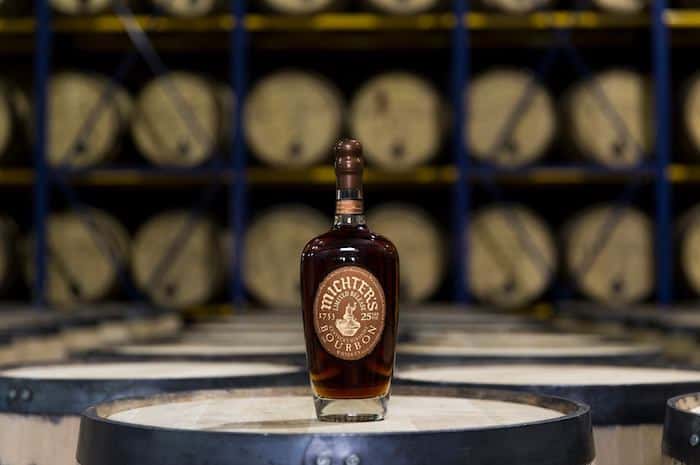If so inclined, you can always find something to worry about. Almost as soon as American whiskey began its revival 20 or so years ago, people started to fret about the next bourbon bust. As demand has continued to grow and producers have scrambled to catch up, fears of a bubble poised to pop have kept pace.
How valid are those concerns? If a tumble comes, how bad will it be? And how long will it last?
The bourbon aging cycle makes production planning ridiculously hard. Whiskey you distill today won’t be sellable until 2022, then you will sell some of it each year until 2028. So, how much should you make?
In practice, production planners operate on a much shorter term. “We just hope to get the next five years right,” is what they say. Advances in information technology have given them powerful predictive tools, but nothing changes the fact that whiskey maturation takes time.
To imagine where sales are going, you can look at where they have been, but because of the disruptions of Prohibition (1920-1933), the Great Depression (1929-1939), and World War II (1941-1945), what we can learn from history is limited. American whiskey boomed between 1945 and 1970, 25 years. The subsequent bust lasted 30 years. We are now 18 years into the revival. Does that mean a bust is coming in the next five to ten years?
Although it covers 73 years, the history just described encompasses slightly more than one cycle, so cyclicality is not a very useful predicter in this case.
But history does tell us something interesting about growth potential. Sales of North American whiskey (Canadian whisky is included in this statistic) peaked in 1970 at just shy of 80 million cases, compared to 50.5 million sold in 2017. There were, however, only 122 million legal drinking age adults in the U.S. in 1970, there were twice as many in 2017. That is about 8 bottles per person in 1970, compared to 2.5 today.
In 1970, if you drank spirits you almost surely drank North American whiskey. Today, we drink many different things. Whiskey’s share-of-mouth can still grow.
What else do we know? On February 1, the Distilled Spirits Council reported at its annual economic briefing record spirits sales and volumes. Supplier sales were up 4 percent, while volumes rose 2.6 percent, which shows that consumers are choosing higher-end distilled spirits products across most categories.
American Whiskey (bourbon, Tennessee whiskey, and rye) is one of the key drivers of distilled spirits growth in the U.S. market, up 8.1 percent in 2017, twice as much as the market overall. It was a $252 million increase over 2016, coming to a total of $3.4 billion. Other categories such as Tequila, Cognac and Irish Whiskey grew more, but from smaller bases.
The export market, which is almost all whiskey, grew to $1.63 billion in 2017, a 14.3 percent increase over 2016. The most growth came from the United Kingdom, Germany, Brazil, France and Spain, in that order. The huge growth potential of Asia is still unrealized.
Worldwide, sales of American whiskey lag only slightly behind sales of Scotch whisky, with American whiskey at about $5 billion, and Scotch at about $6 billion. Not very many years ago, Scotch outsold bourbon 4:1. Although Scotch is declining, whiskey overall is growing, with the largest share of that growth coming from products made in the USA.
On the other side, production and production capacity are also up. The biggest distillers continue to grow, and new players keep entering the marketplace. One significant change has been the transformation of longtime non-distiller producers such as Luxco and Michter’s into distillers. Although Luxco is just getting started, the oldest Shively-made whiskey in Michter’s warehouse is 2.5 years old. Both companies have large inventories of acquired whiskey in a wide range of ages. Their move from buying to distilling shifts their volume from the consuming side of the bulk whiskey market to the producing side.
Despite the many new entrees, most of tomorrow’s volume will come from the same four sources as today’s: Brown-Forman, Beam Suntory, Sazerac, and Heaven Hill, in that order. Naturally, the largest producers have the largest and most diverse inventories of aging stock, which gives them the most flexibility in adjusting to market changes.
Today, many popular brands are in short supply and producers struggle to meet their own aging standards, especially in the now prime eight-to-twelve-year segment. If a more favorable balance between supply and demand relieves some of that pressure, good. If a more robust supply moderates prices, that’s good too. It looks like that is the way we are going for the foreseeable future, some peaks and troughs, but no major swings either way.
A bust would require a swift collapse of sales magnified by steadily increasing supply. There do not seem to be any conditions in place that could cause that to happen. More likely is a market in which prices, depletions, and inventory float in a narrow range. All in all, pretty good.










